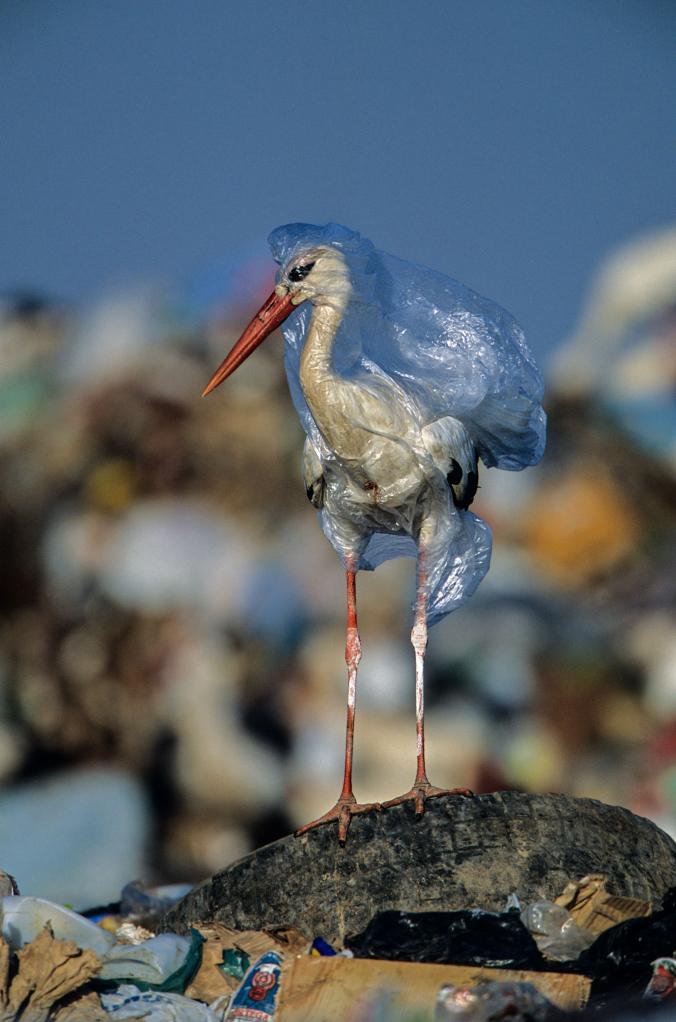For Animals, Plastic Is Turning the Ocean Into a Minefield
Read this story and more in the June 2018 issue of National Geographic magazine.
On a boat off Costa Rica, a biologist uses pliers from a Swiss army knife to try to extract a plastic straw from a sea turtle’s nostril. The turtle writhes in agony, bleeding profusely. For eight painful minutes the YouTube video ticks on; it has logged more than 20 million views, even though it’s so hard to watch. At the end the increasingly desperate biologists finally manage to dislodge a four-inch-long straw from the creature’s nose.
Raw scenes like this, which lay bare the toll of plastic on wildlife, have become familiar: The dead albatross, its stomach bursting with refuse. The turtle stuck in a six-pack ring, its shell warped from years of straining against the tough plastic. The seal snared in a discarded fishing net.

Some animals now live in a world of plastics—like these hyenas scavenging at a landfill in Harar, Ethiopia. They listen for garbage trucks and find much of their food in trash. PHOTOGRAPH BY BRIAN LEHMANN
But most of the time, the harm is stealthier. Flesh-footed shearwaters, large, sooty brown seabirds that nest on islands off the coasts of Australia and New Zealand, eat more plastic as a proportion of their body mass than any other marine animal, researchers say: In one large population, 90 percent of the fledglings had already ingested some. A plastic shard piercing an intestine can kill a bird quickly. But typically the consumption of plastic just leads to chronic, unrelenting hunger.

On Okinawa, Japan, a hermit crab resorts to a plastic bottle cap to protect its soft abdomen. Beachgoers collect the shells the crabs normally use, and they leave trash behind. PHOTOGRAPH BY SHAWN MILLER
“The really sad thing about this is that they’re eating plastic thinking it’s food,” says Matthew Savoca, a marine biologist with the National Oceanic and Atmospheric Administration. “Imagine you ate lunch and then just felt weak and lethargic and hungry all day. That would be very confusing.” Fish such as anchovies, Savoca has found, eat plastic because it smells like food once it’s covered with algae. Seabirds, expending energy their malnourished bodies don’t have, roam farther in search of real food, only to drag back plastic waste to feed their young.
We don’t fully understand plastic’s long-term impact on wildlife (nor its impact on us). We haven’t been using the stuff for very long. The first documented cases of seabirds ingesting plastic were 74 Laysan albatross chicks found on a Pacific atoll in 1966, when plastic production was roughly a twentieth of what it is today. In hindsight, those birds seem like the proverbial canaries in a coal mine.

The photographer freed this stork from a plastic bag at a landfill in Spain. One bag can kill more than once: Carcasses decay, but plastic lasts and can choke or trap again. JOHN CANCALOS



Leave a Reply
Your email is safe with us.